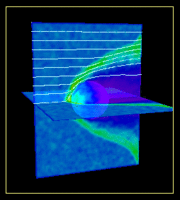Mars Netlander
Smart-1

Rosetta

Venus Plasma-Simulation
|
|
| Index |
| Seminars |
| Space Physics |
| Solar System Research |
| UHA-TAT Group (prot.) |
| Kumpula Space Center |
| Graduate School |
| Electric Sailing |
| COSIMA on Rosetta |
| EuroPlaNet IDIS |
| Rocket-Project NISSE (ESA) |
Solar System Research
Highlights:
==================================